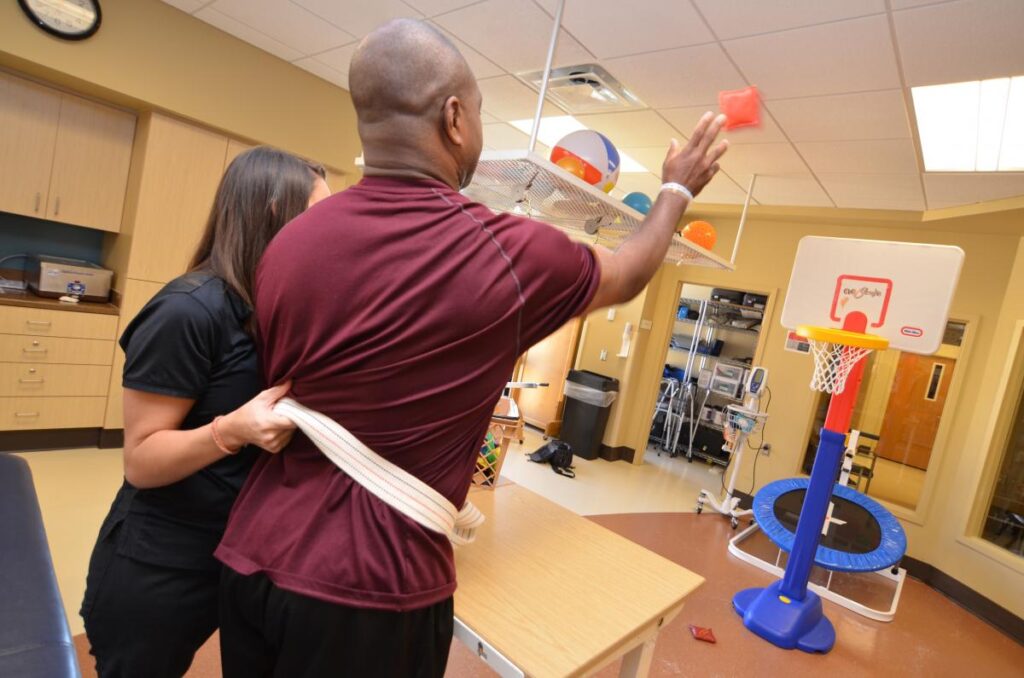Neuro rehabilitation for stroke survivors has evolved significantly in recent years, incorporating innovative techniques that enhance recovery and improve quality of life. Stroke can severely impact physical and cognitive functions, but advancements in rehabilitation strategies are helping individuals regain their independence. In this article, we will explore various innovative techniques in neuro rehabilitation for stroke survivors, highlighting their effectiveness and the positive outcomes they can bring. Whether you are a caregiver, a healthcare professional, or a stroke survivor, understanding these techniques can empower you or your loved ones on the road to recovery.
Understanding Neuro Rehabilitation
Neuro rehabilitation is a specialized form of therapy designed to help individuals recover from neurological impairments caused by conditions like strokes, traumatic brain injuries, or other disorders. The goal is to restore lost functions, improve mobility, and enhance overall well-being. The approach to neuro rehabilitation is often multidisciplinary, involving a team of healthcare professionals, including physiotherapists, occupational therapists, speech therapists, and neurologists.
The Role of Technology in Neuro Rehabilitation
Virtual Reality (VR) Therapy
One of the most exciting developments in neuro rehabilitation for stroke survivors is the use of virtual reality (VR). VR therapy immerses patients in simulated environments, allowing them to practice movements and tasks in a safe and controlled setting. This technique has proven particularly effective for enhancing motor skills and improving cognitive function.
Benefits of VR Therapy:
- Engagement: The immersive nature of VR keeps patients engaged, which can motivate them to participate more actively in their rehabilitation.
- Customizable Exercises: Therapists can tailor exercises to meet the specific needs of each patient, adjusting difficulty levels as they progress.
- Immediate Feedback: VR systems often provide real-time feedback, allowing patients to see their improvements and adjust their efforts accordingly.
Robotic-Assisted Therapy
Robotic-assisted therapy is another groundbreaking innovation in neuro rehabilitation. This technique employs robotic devices to assist patients in performing repetitive movements, which are crucial for motor recovery.
Advantages of Robotic-Assisted Therapy:
- Precision: Robots can deliver precise movements, helping patients practice specific tasks without the risk of injury.
- Repetition: Repetition is vital in rehabilitation. Robotic systems can facilitate thousands of movements in a single session, enhancing motor learning.
- Data Collection: These devices often collect data on patient performance, helping therapists adjust treatment plans based on individual progress.
Task-Oriented Training
Task-oriented training focuses on practicing specific tasks that are meaningful to the patient. This approach helps stroke survivors improve their functional abilities in daily activities, such as dressing, eating, or walking.
Key Elements of Task-Oriented Training:
- Real-Life Application: By practicing real-life tasks, patients can see the relevance of their rehabilitation, which enhances motivation.
- Holistic Approach: This technique often incorporates cognitive and emotional aspects of recovery, addressing the whole person rather than just physical deficits.
- Family Involvement: Engaging family members in the rehabilitation process can provide additional support and encouragement for stroke survivors.
Neuroplasticity and Its Importance
Neuroplasticity refers to the brain’s ability to reorganize itself by forming new neural connections. This phenomenon is crucial in neuro rehabilitation for stroke survivors, as it allows the brain to compensate for damaged areas.
Strategies to Promote Neuroplasticity
- Intensive Practice: Engaging in repetitive, intensive practice of tasks can stimulate neuroplasticity, helping the brain form new pathways.
- Variety in Therapy: Varying exercises and activities can challenge the brain in different ways, promoting adaptive changes.
- Mental Imagery: Encouraging patients to visualize movements or activities can activate similar neural pathways as actual practice, enhancing learning and recovery.
Cognitive Rehabilitation Techniques
Cognitive rehabilitation is essential for stroke survivors who experience memory loss, attention deficits, or other cognitive impairments. Innovative techniques in this area focus on restoring cognitive functions through targeted exercises and interventions.
Computer-Based Cognitive Training
Computer-based cognitive training programs use interactive tasks to improve cognitive functions such as memory, attention, and problem-solving skills. These programs are often tailored to individual needs, allowing for personalized rehabilitation.
Benefits of Computer-Based Training:
- Engagement: The interactive nature of these programs can increase motivation and participation among stroke survivors.
- Progress Tracking: Many programs offer the ability to track progress over time, helping both patients and therapists monitor improvements.
Mindfulness and Meditation
Incorporating mindfulness and meditation into cognitive rehabilitation can help stroke survivors manage stress and improve focus. Techniques such as deep breathing and guided imagery can promote relaxation and enhance cognitive functions.
Advantages of Mindfulness:
- Stress Reduction: Mindfulness can reduce anxiety and depression, common issues faced by stroke survivors.
- Improved Attention: Regular mindfulness practice can enhance concentration and attention span, aiding cognitive recovery.
The Importance of Multidisciplinary Teams
A collaborative approach is vital in neuro rehabilitation for stroke survivors. Multidisciplinary teams comprising various healthcare professionals can offer comprehensive care, addressing the diverse needs of patients.
Roles of Different Professionals
- Physiotherapists: Focus on improving physical mobility and strength.
- Occupational Therapists: Help patients regain independence in daily activities.
- Speech Therapists: Address communication and swallowing difficulties.
- Neuropsychologists: Provide cognitive assessments and interventions.
Empowering Patients Through Education
Education plays a crucial role in neuro rehabilitation. Providing patients and their families with knowledge about the recovery process empowers them to take an active role in their rehabilitation.
Key Educational Components
- Understanding Stroke: Educating patients about the effects of stroke on the brain and body can foster realistic expectations and encourage participation in therapy.
- Self-Management Strategies: Teaching patients self-management techniques can help them navigate challenges and maintain progress after formal rehabilitation ends.
Conclusion
Innovative techniques in neuro rehabilitation for stroke survivors are transforming the recovery landscape, providing hope and new opportunities for regaining independence. From virtual reality therapy to robotic-assisted training, these advancements underscore the importance of a personalized, multidisciplinary approach. As the field of neuro rehabilitation continues to evolve, stroke survivors can look forward to a brighter future filled with possibilities for recovery and improved quality of life. Understanding and embracing these innovative techniques can empower both stroke survivors and their caregivers on the journey to recovery.
We are India’s first comprehensive continuum care provider. We provide multidisciplinary out of hospital care to acute and post-acute and chronically ill patients at our critical care facilities and your home.


